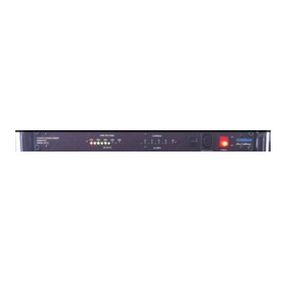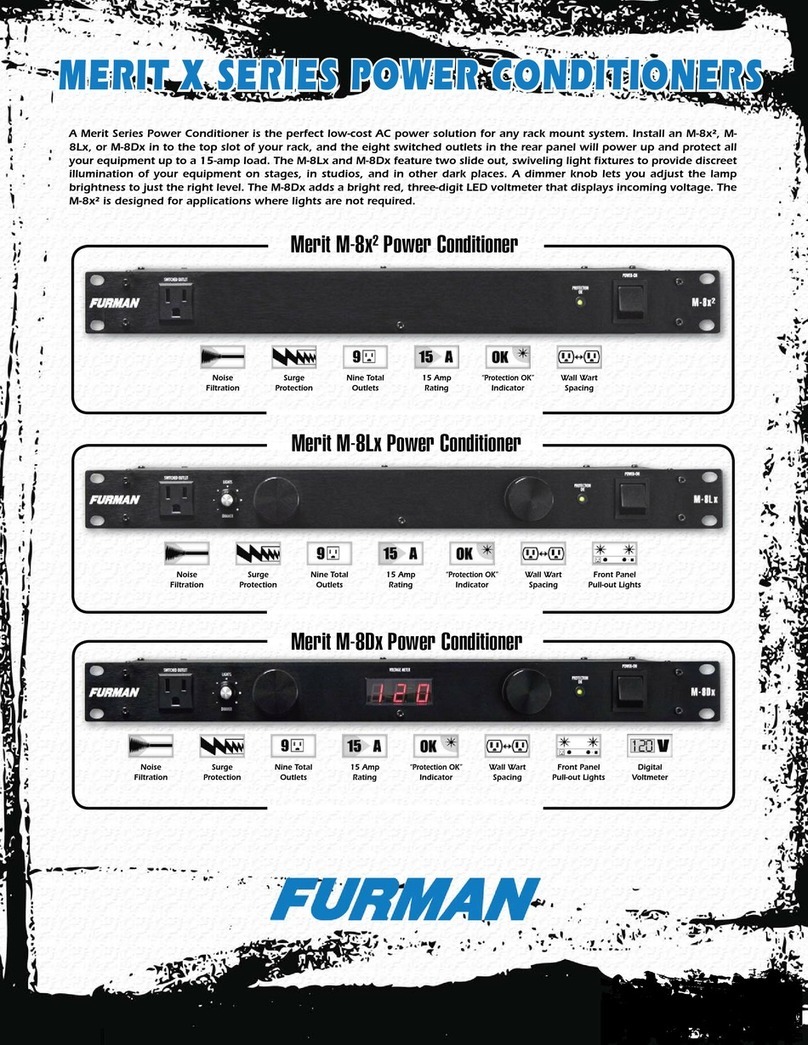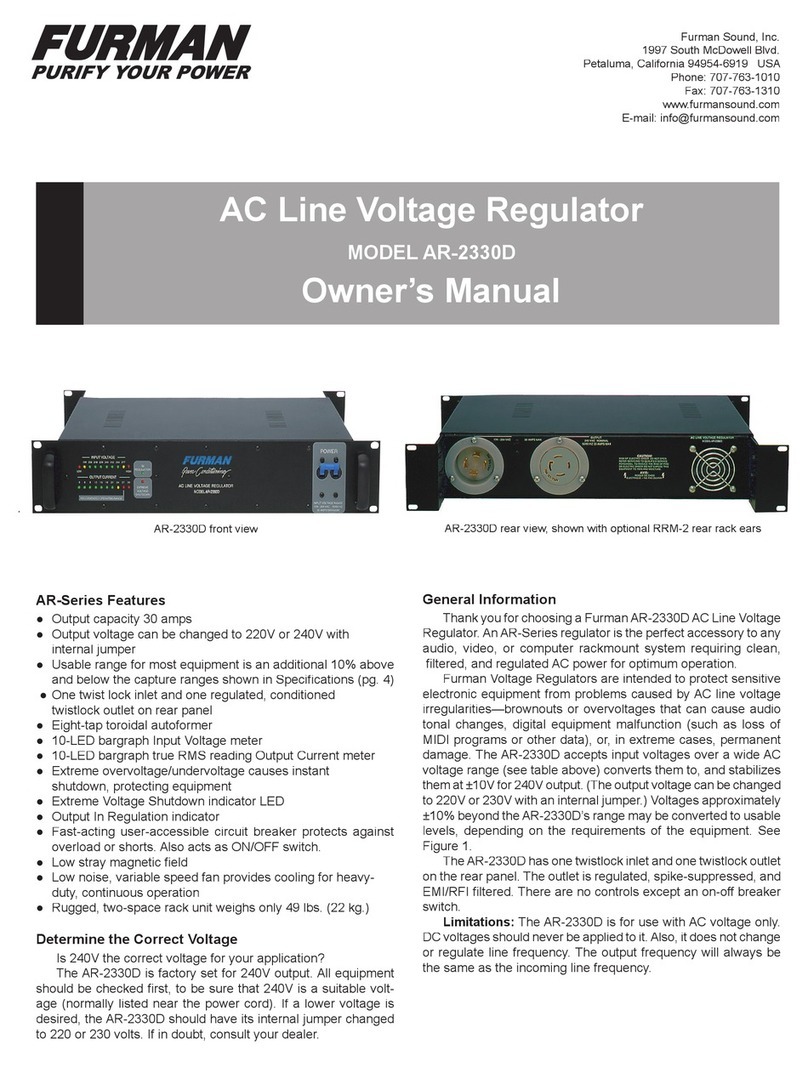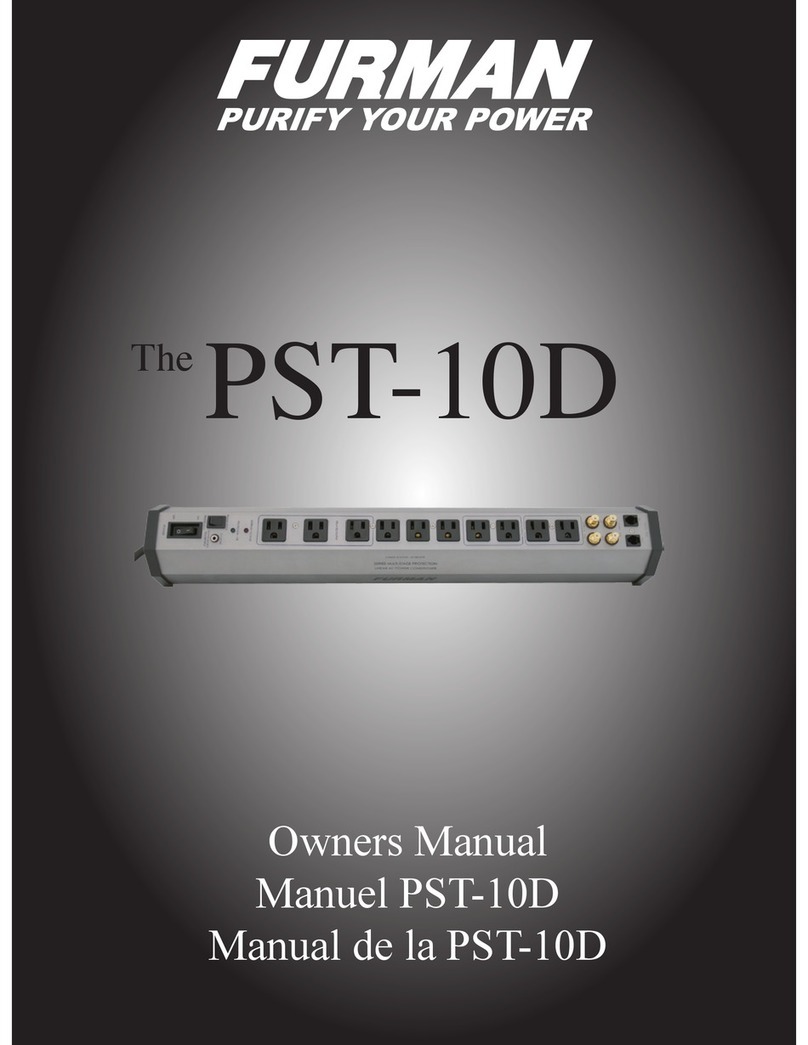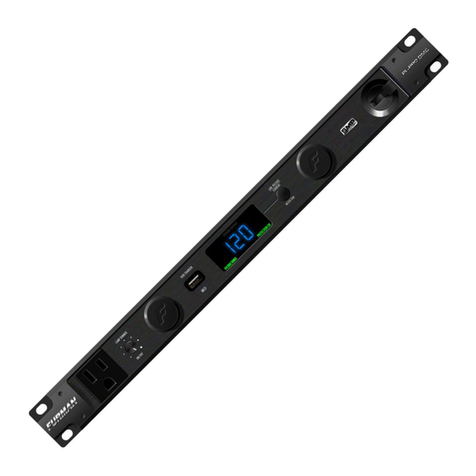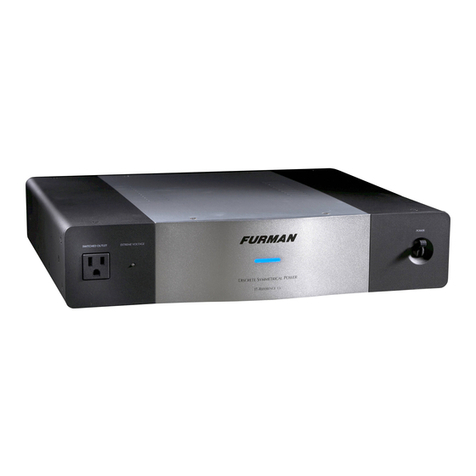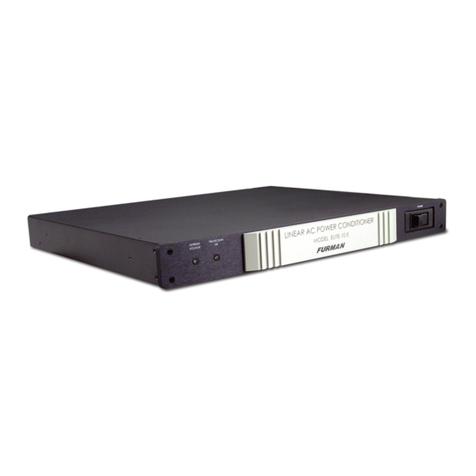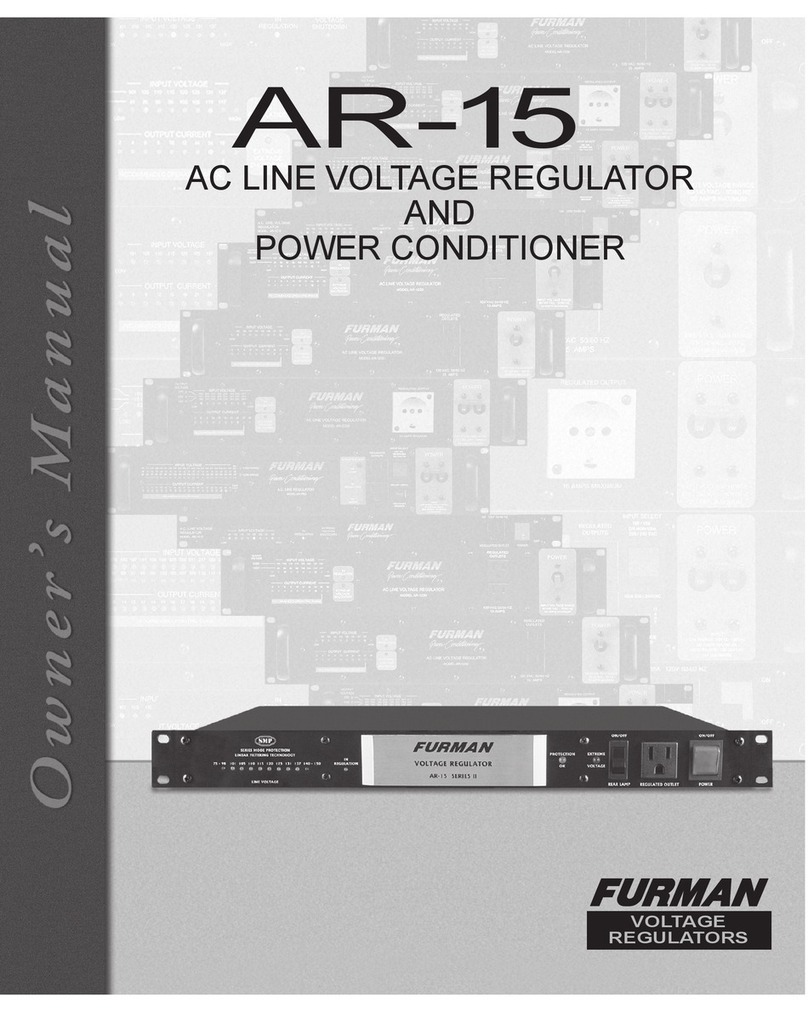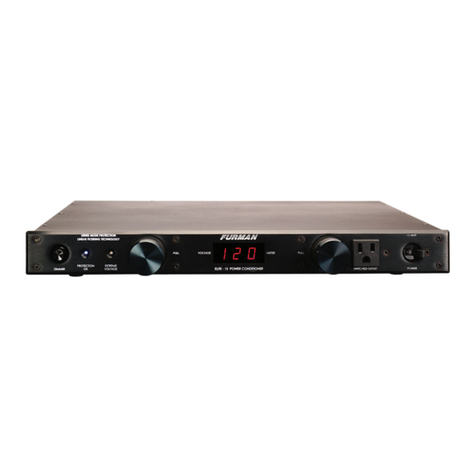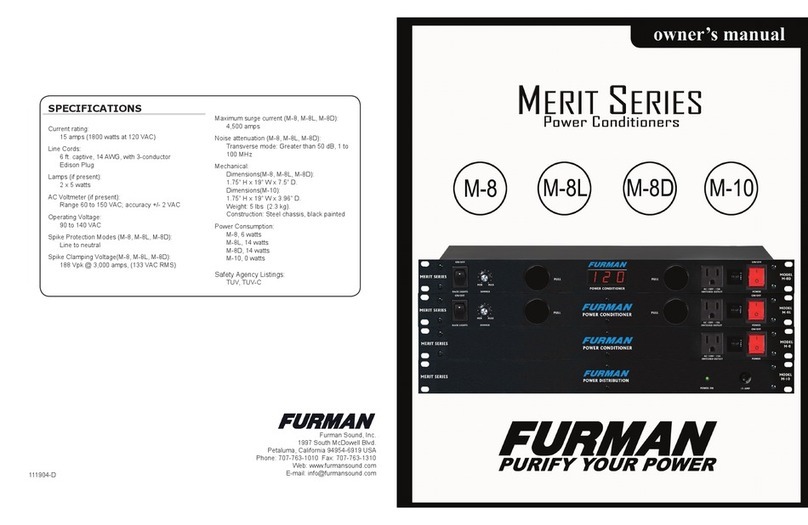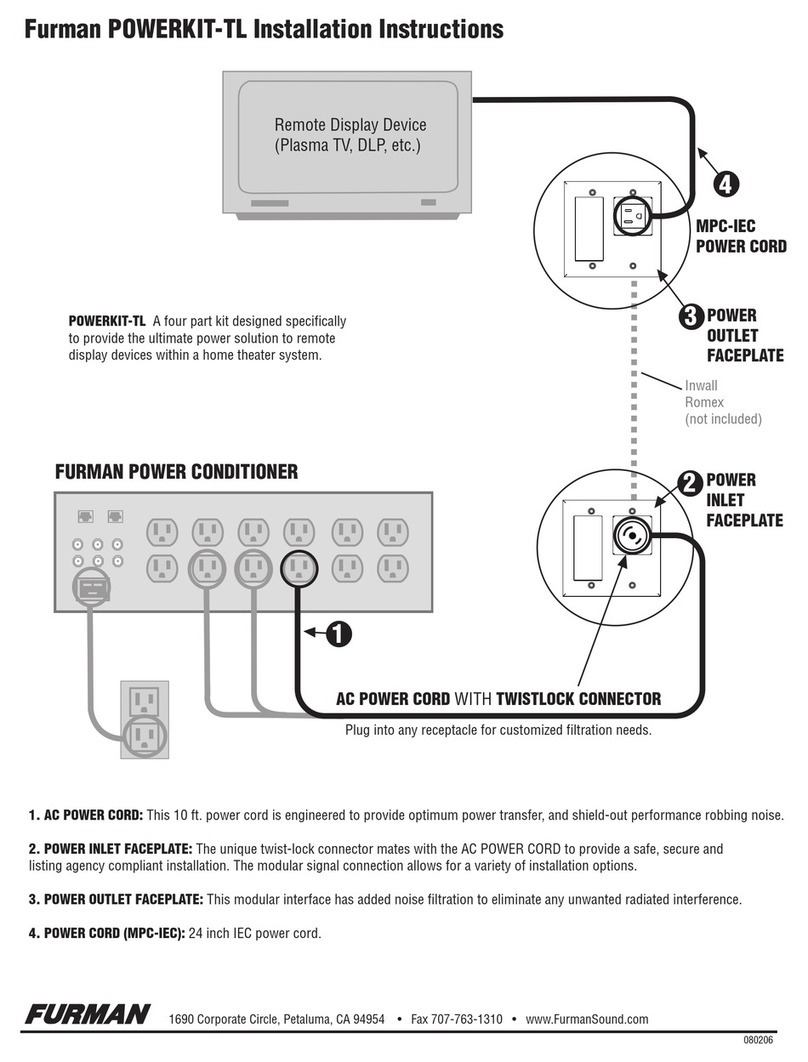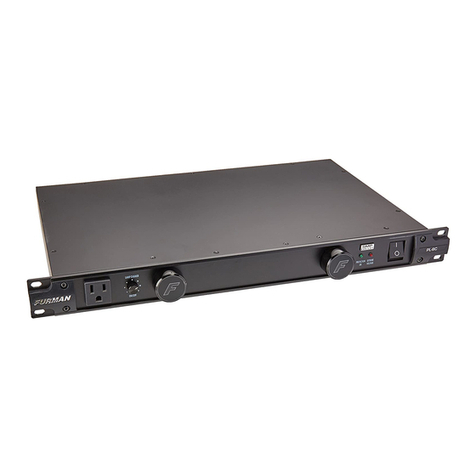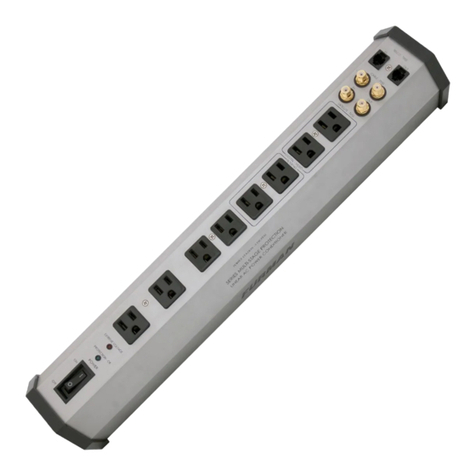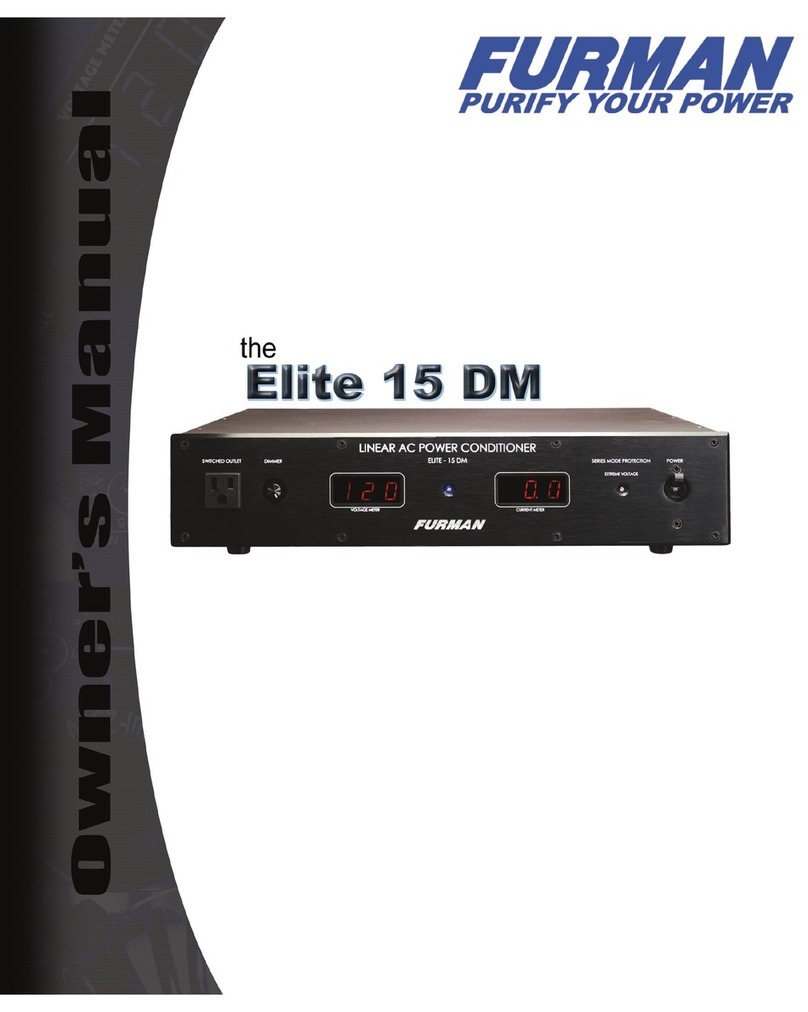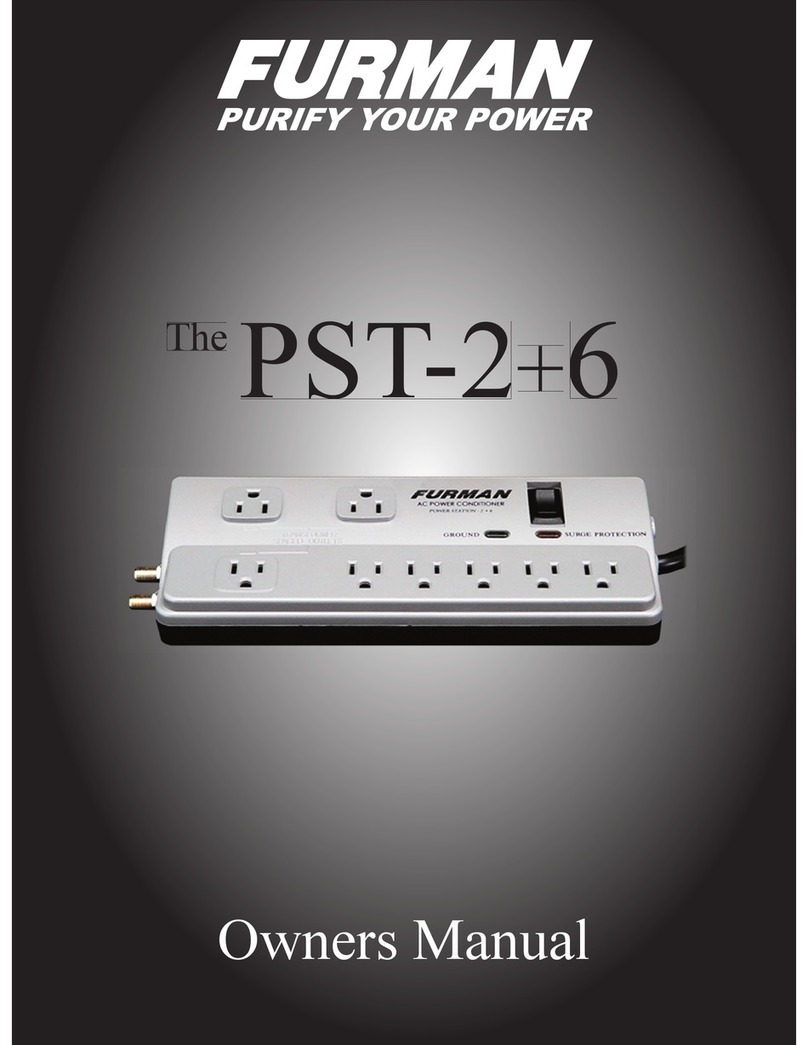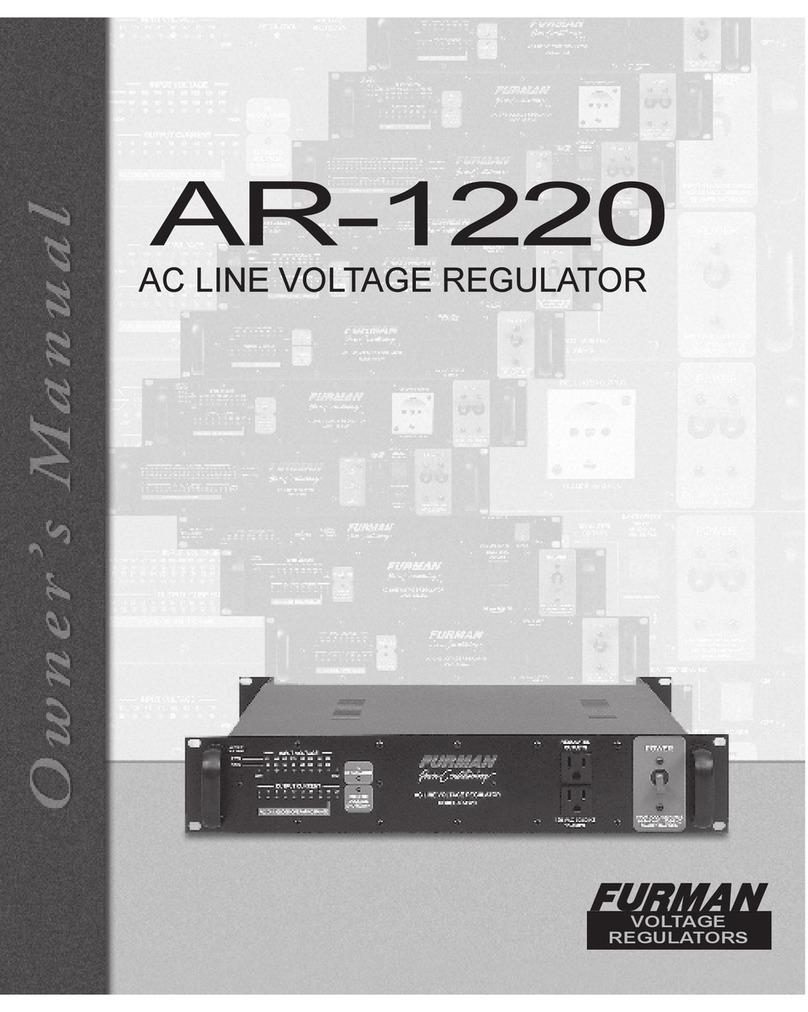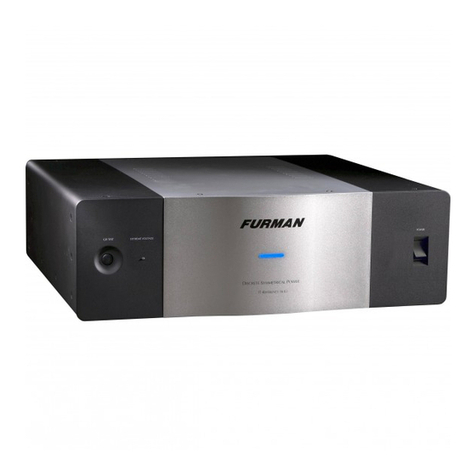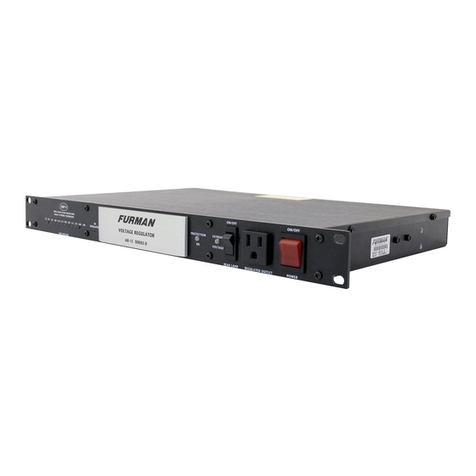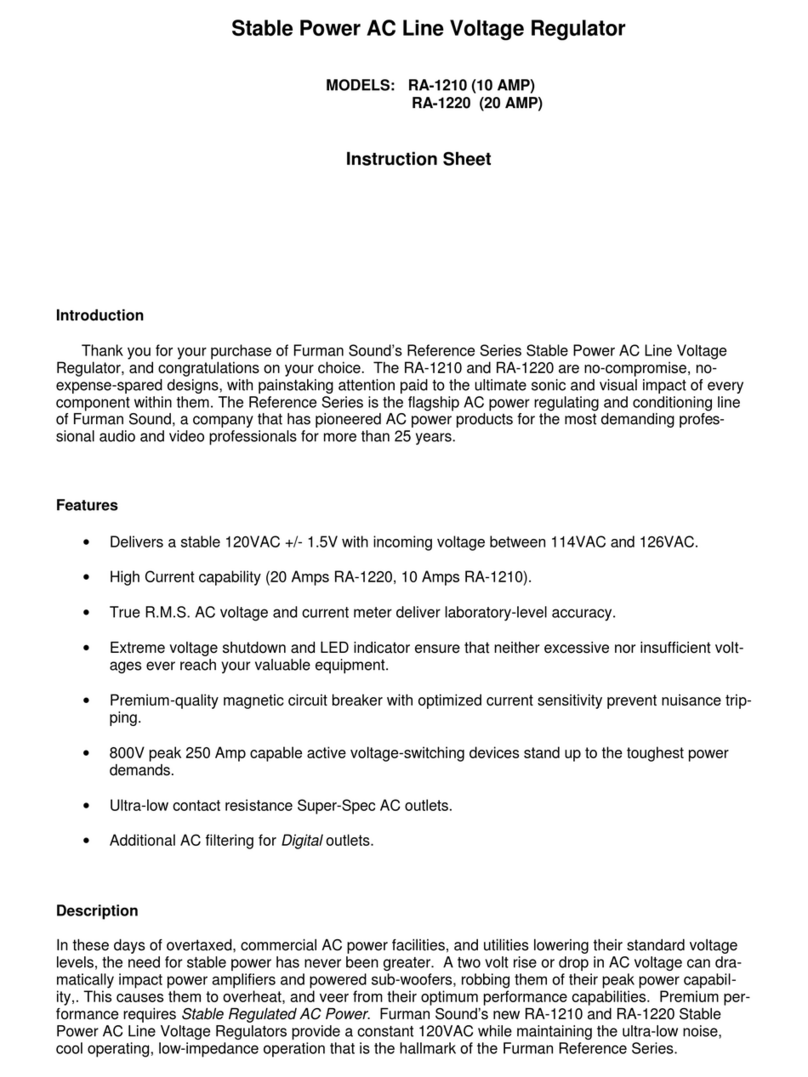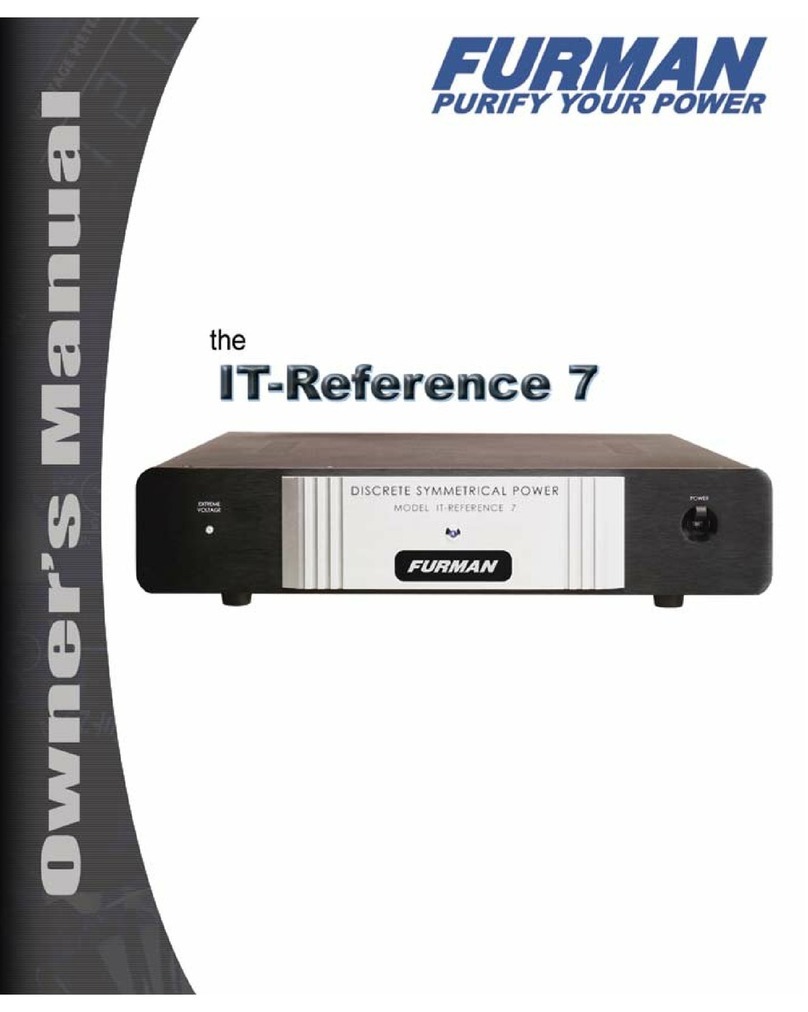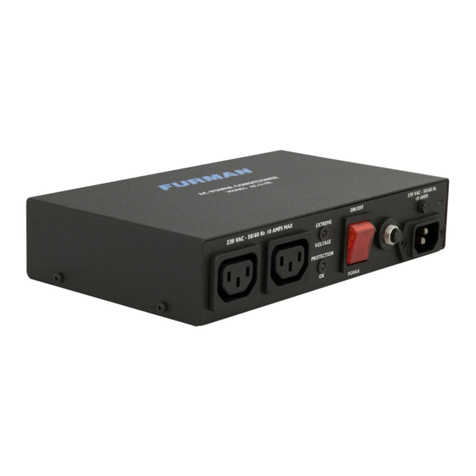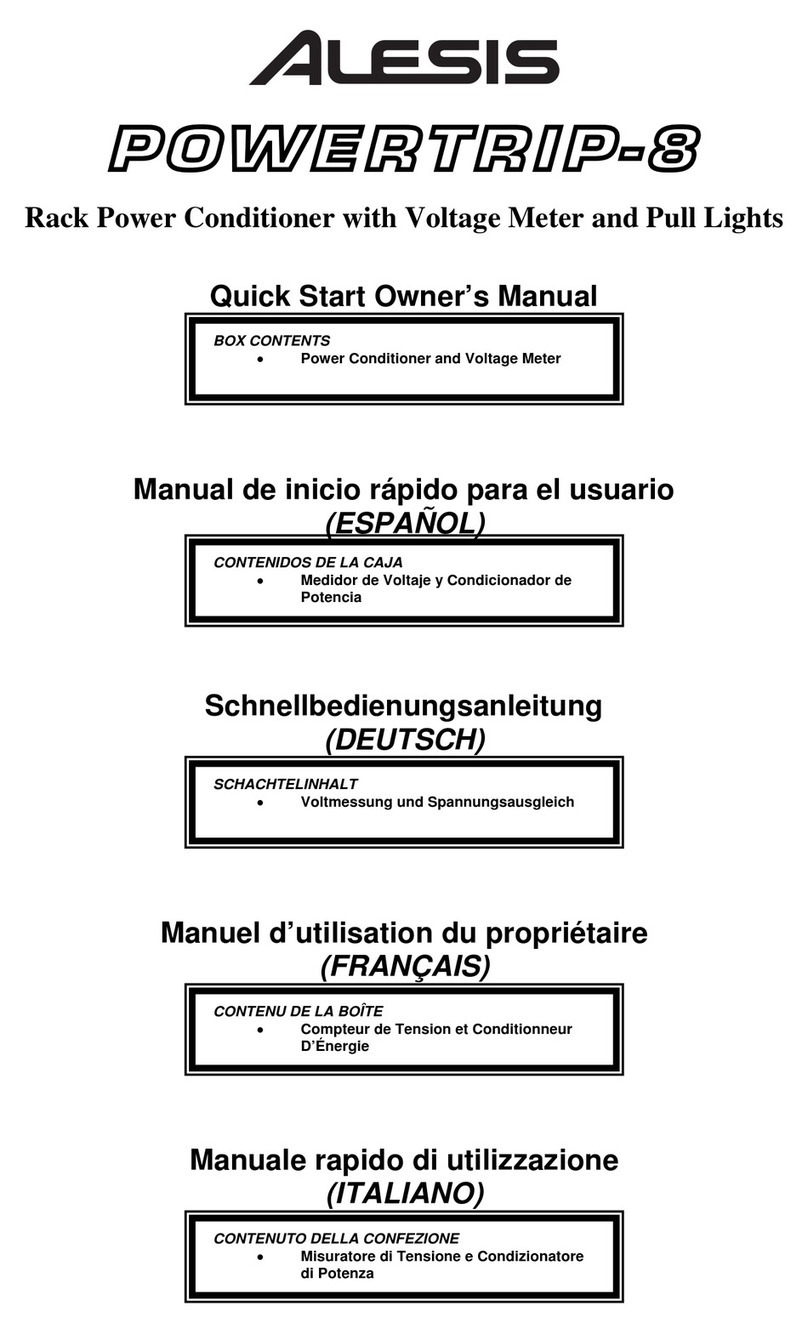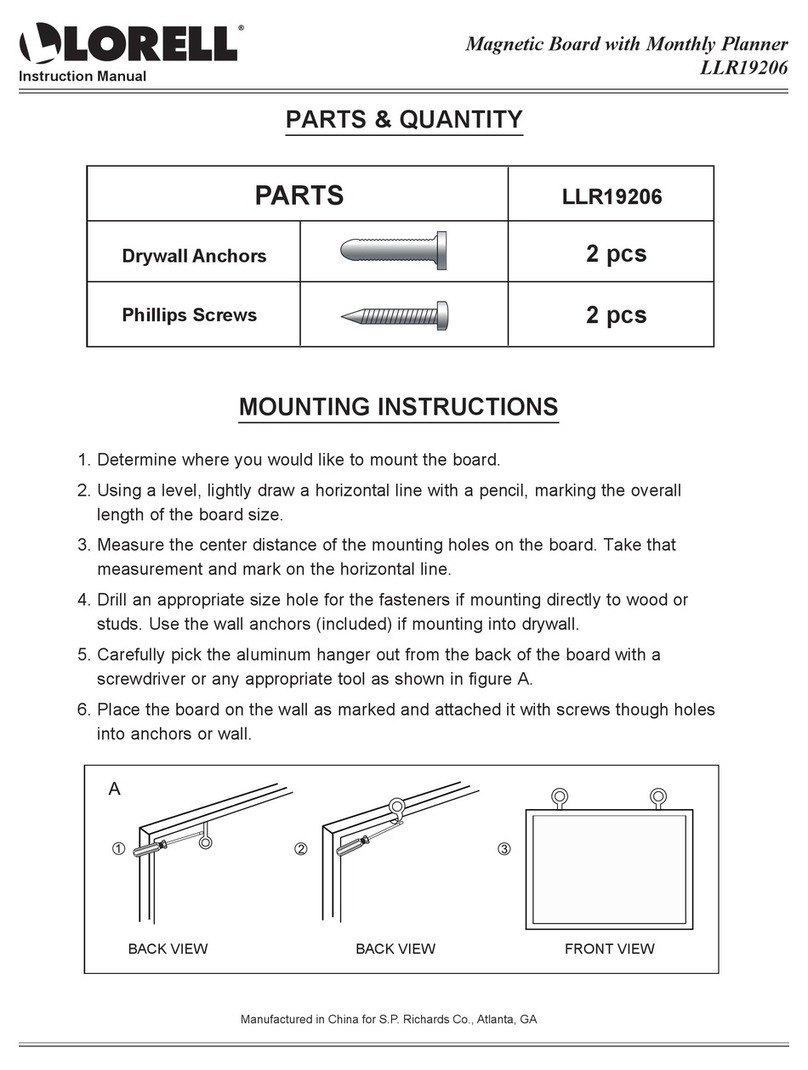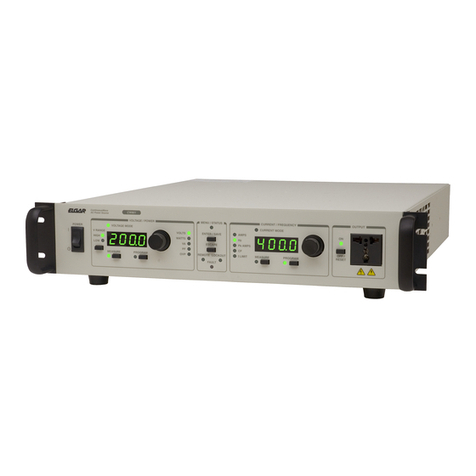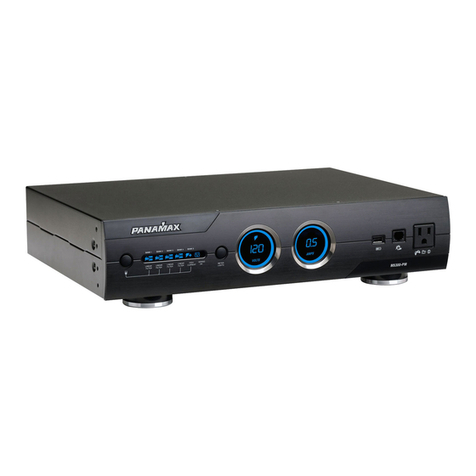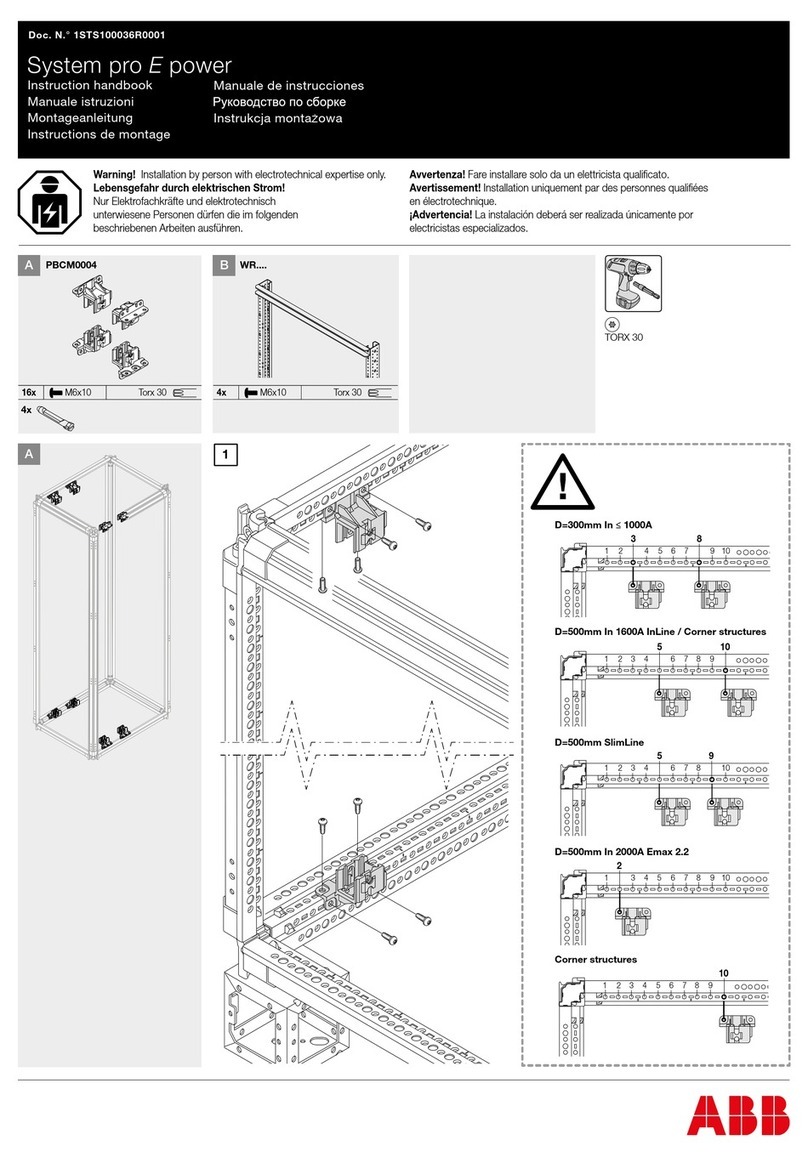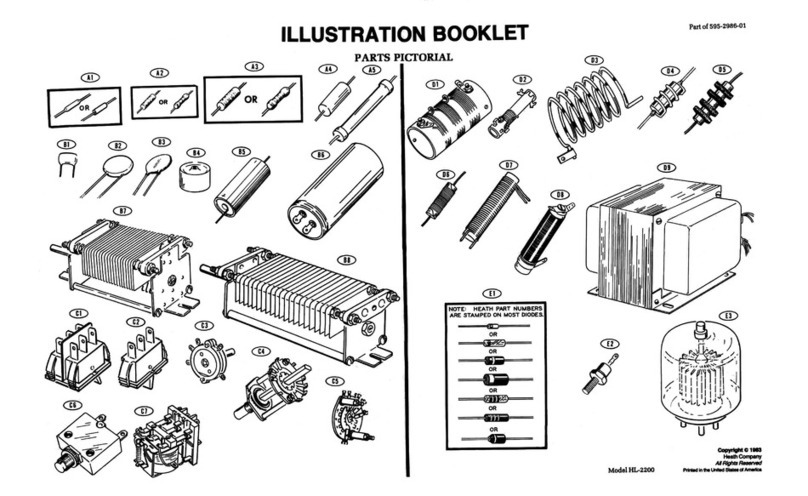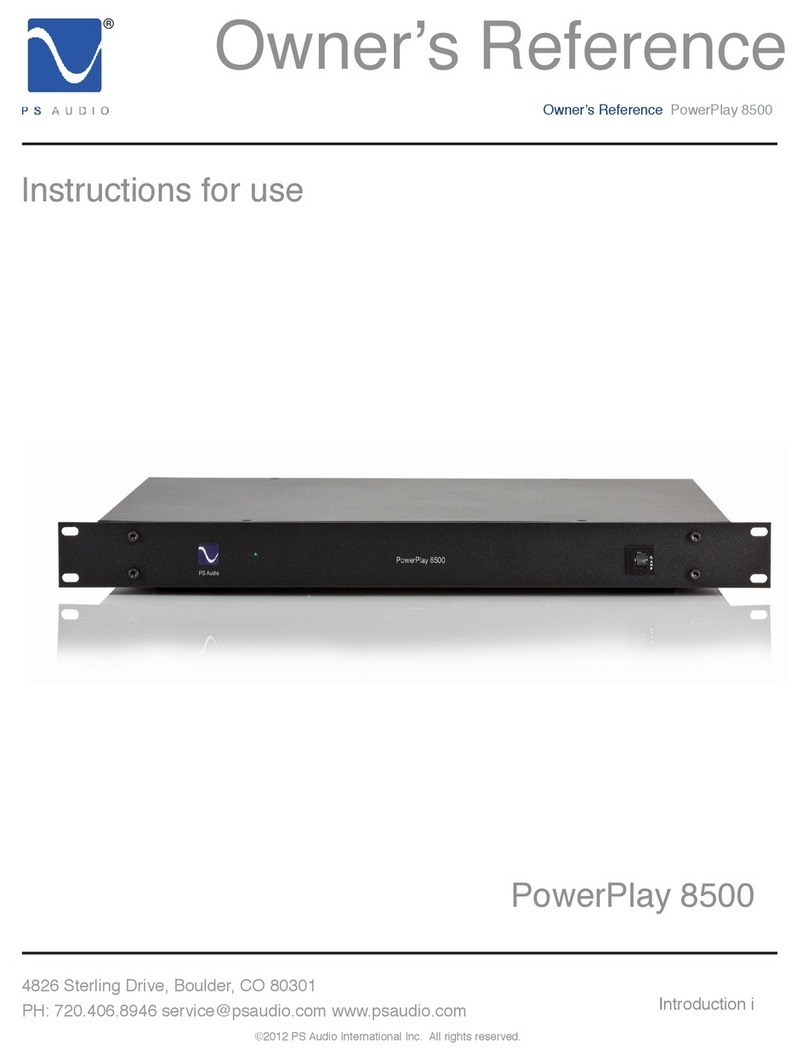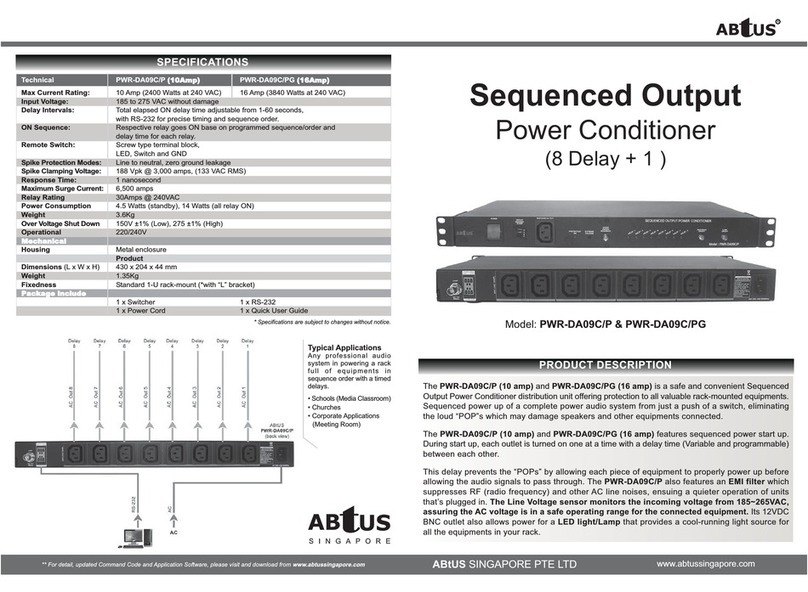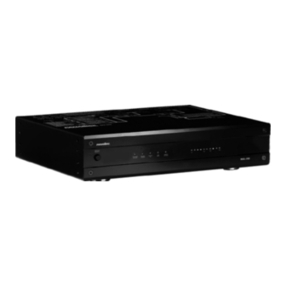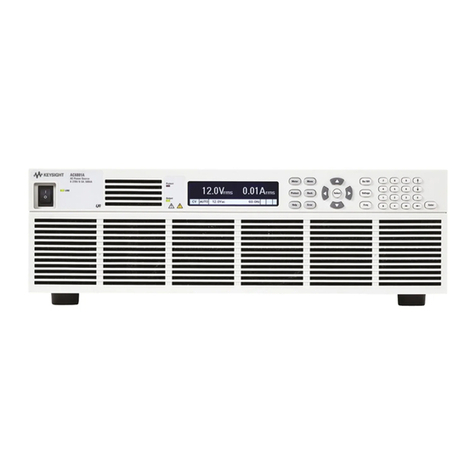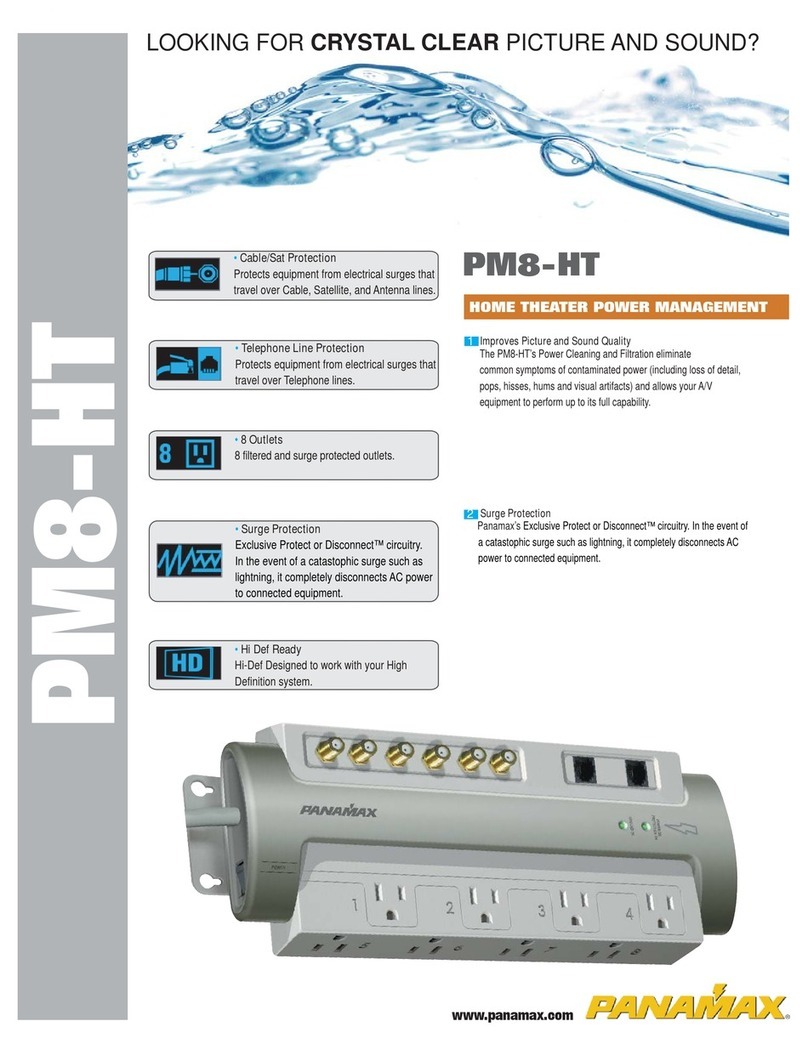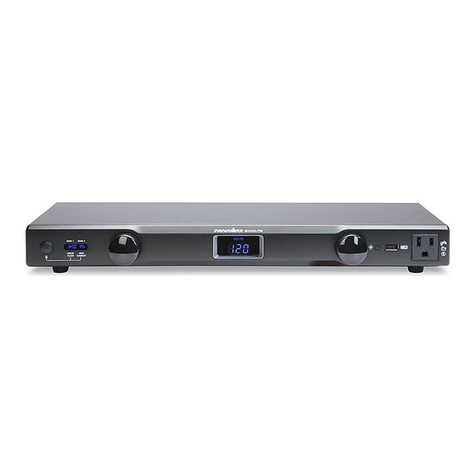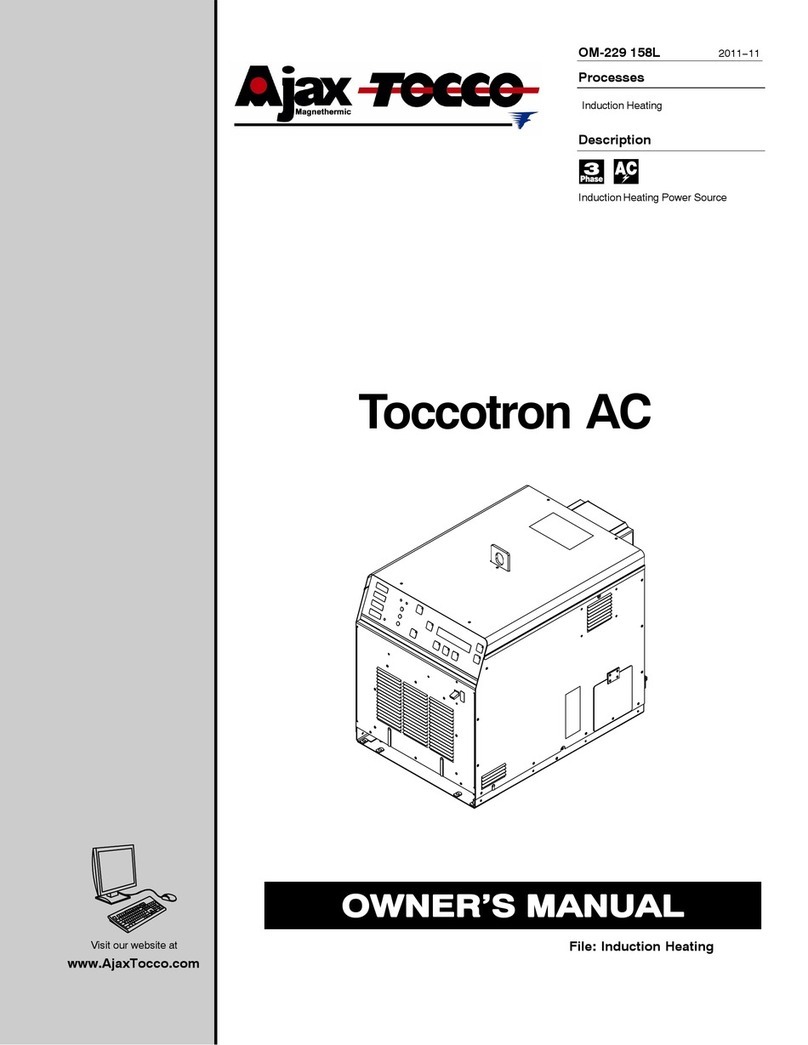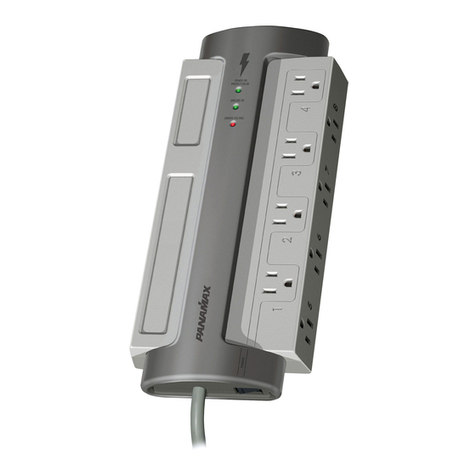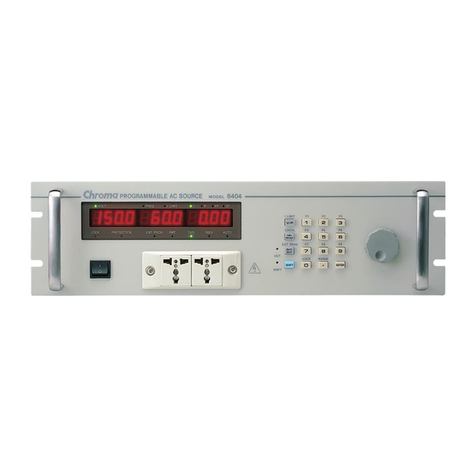
General Information
Congratulations on your purchase of a Furman AR-1215,
AR-1215J, or AR-2306 AC Line Voltage Regulator. TheAR-Series
regulators are designed specifically for any audio, video, or
computer rackmount system requiring clean, filtered, and
regulated AC power for optimum operation.
Furman Voltage Regulators are intended to protect sensitive
electronic equipment from problems caused by AC line voltage
irregularities—brownoutsorovervoltagesthatcan cause audio tonal
changes, digital equipment malfunction (such as loss of MIDI
programs or other data), or, in extreme cases, permanent
damage. They accept input voltages over a wideAC voltage range
(see table on page 1) and convert them to a steady, stable output
at the desired standard voltage, plus or minus five [ten] volts.
Voltages approximately ±10% beyond that range may be
converted to usable levels, depending on the requirements of the
equipment. See graphs on the back page.
The AR-1215 has eight [AR-2306 has ten IEC-320]
convenience outlets on the rear panel, and one on the front panel.
All are functionally interchangeable. The outlets are regulated,
spike-suppressed, and filtered against RFI with a 3-pole filter,
making the unit a full-function power conditioner. TheAR-1215 has
no controls except an on-off breaker switch. (The AR-1215J and
AR-2306 also have an output voltage selector switch.)
Note: The AR-1215 and AR-2306 are for use with
AC voltage
only
. DC voltages should never be applied to them. Also, they do
not change or regulate line frequency. The output frequency will
always be the same as the incoming frequency.
Maximum and Minimum Load
The AR-1215 and AR-1215J can handle loads totalling up
to 15 amperes as long as the input voltage is equal to or above 124
volts (or 104 volts if using AR-1215J set to 100 volt output). For
voltages below that level, its capacity must be derated at
approximately113milliamperes per volt. (See graphs on back page.)
As a practical matter, therefore, to cope successfully with
worst-case brownout conditions, you should plan your total load so
that it does not exceed 12 amps, or 1400 watts. Please note that
this refers to the aggregate power requirement of all
equipment plugged into the Voltage Regulator, not to each
individual item.
The AR-2306 can handle loads totalling up to 6 amperes as
long as the input voltage is equal to or above the selected output
voltage. For voltages below that level, its capacity must be
derated at approximately 23 milliamperes per volt. (Again, please
see graphs on back page.)As a practical matter, therefore, to cope
successfully with worst-case brownout conditions, you should plan
your total load so that it does not exceed 5 amps, or 1100 watts.
Please note that this refers to the aggregate power requirement of
all equipment plugged into the Voltage Regulator, not to each
individual item.
NOTE: While there is no minimum load requirement for the
AR-1215 or AR-2306, you may experience an audible mechanical
hum coming directly from the unit when the POWER switch is on
with nothing plugged in. This effect will disappear as soon as you
plug in any equipment drawing 40 to 50 watts total.
Extreme Voltage Protection
The AR-Series includes special circuitry to sense over- and
under-voltages and positively shut down the output before
possible damage is done. See the Specifications on the back page
for the exact voltages at which shutdown occurs. When the input
voltage exceeds the limit, the power will cut off. It will come back on
automatically when the overvoltage is removed as long as the
voltage has not exceeded 300V [all models]. The red LED
labelled EXTREME VOLTAGE SHUTDOWN indicates the
shutdown condition. The output is also shut down for extremely low
input voltages.
To provide protection against a catastrophic error in AC mains
wiring,dangerously high voltages (those overapproximately 300V)
will cause an internal fuse to blow, but equipment plugged into the
Voltage Regulator will not be damaged.
Fuses and Circuit Breakers
There is one fuse and one circuit breaker in the
AR-Series.In the event that theunit appears to be completelydead
(neitherthe Power switch nor anyLED’slight up), unplug the power
cord and the load and check the breaker. If the circuit breaker is
tripped, a white button will pop up. Push it back in to reset it. The
purposes of these circuit protection devices are:
1. A fast-blow 15 amp [6 amp] circuit breaker is accessible
at the rear panel without removing the unit from the rack.
Definitions
VOLTAGE REGULATION: The AC line voltage is a number indicating
the nominal electrical potential that has been adopted in a region for powering
electrical equipment of all kinds. In most of North America it is 117 volts AC; in
Japan, 100 volts; and in many other countries 220, 230, or 240 volts. The actual
voltage can fall below or rise above this nominal level due to brownouts, power
cutbacks, use of substandard wiring, and other causes. These deviations can cause
poor performance or malfunction. A regulator is a device which, through use of a
transformer, corrects the voltage deviation by stepping it up or down so that it is as
close as possible to the nominal level.
SPIKE: A pulse of energy on the power line. Spikes can have voltages as
high as 6000 volts. Though they are usually of very short duration, the energy they
contain can be considerable, enough to damage sensitive solid-state components
in audio and computer equipment. Spikes can also foul switch contacts and
degrade wiring insulation. They are an unavoidable component of electric power.
They are caused unpredictably by electric motors switching on or off (on the
premises or outside), utility company maintenance operations, nearby lightning
strikes, and other factors. Spikes (also called surges or transients) are absorbed
by special components called MOV’s in the AR-series to provide safe voltage
levels to protect your equipment.
RFI/EMI INTERFERENCE: Noise from RFI (Radio Frequency Interference)
or EMI (Electro Magnetic Interference) involves lower voltages and less energy
than is found in spikes, but it is continuous rather than transient in nature. It is not
likely to cause physical damage, but it can certainly be annoying, producing static
in audio circuits, “snow” on video screens, or garbled data in computers. Noise can
be introduced into AC lines by nearby radio transmitters, certain kinds of lighting,
electric motors, and others. Because noise occurs at higher frequencies than the
50 or 60 Hz AC line, it can be effectively reduced through use of low-pass filtering.
NOTE: The three models in the AR-Series differ in their nominal
AC output voltages. Model AR-1215 produces 120 VAC: AR-1215J
produces either 100 or 120 VAC; and AR-2306 produces either
220, 230, or 240 VAC.
Where differences exist between models, information applicable
to the AR-2306 is shown in brackets [ ] in the instructions.
AR-1215 front view
AR-1215J rear view (the switch above the AC cord is not present in
the AR-1215)
AR-2306 rear view
6
A
M
P
220
OUTPUT VOLTAGE
230 240
CIRCUIT
BREAKER
N’OUVREZ PAS—RISQUE
DE CHOC ELECTRIQUE
174-288 VAC 6 A
W
A
R
N
I
N
G
FOR CONTINUED
PROTECTION AGAINST
FIRE HAZARD REPLACE
WITH SAME TYPE AND
RATING OF FUSE
15 AMP
100 V 120V
75-140 VAC
REGULATED
OUTPUTS
120 VAC
15 AMPS
ATTENTION:
REMPLACER LE FUSIBLE
AVEC MEME TYPE
DISCONNECT SUPPLY
BEFORE CHANGING FUSE.
COUPER L'ALIMENTATION
AVANT DE CHANGER LE FUSIBLE
15
A
M
P
A.C. LINE VOLTAGE
REGULATOR
MODEL AR-1215
INPUT VOLTAGE
IN
REGULATION
EXTREME
VOLTAGE
SHUTDOWN
REGULATED OUTLET POWER
ON
OFF
75-98
110 115 120 125 131 137 140-150105101
15A 120V 50-60HZ
